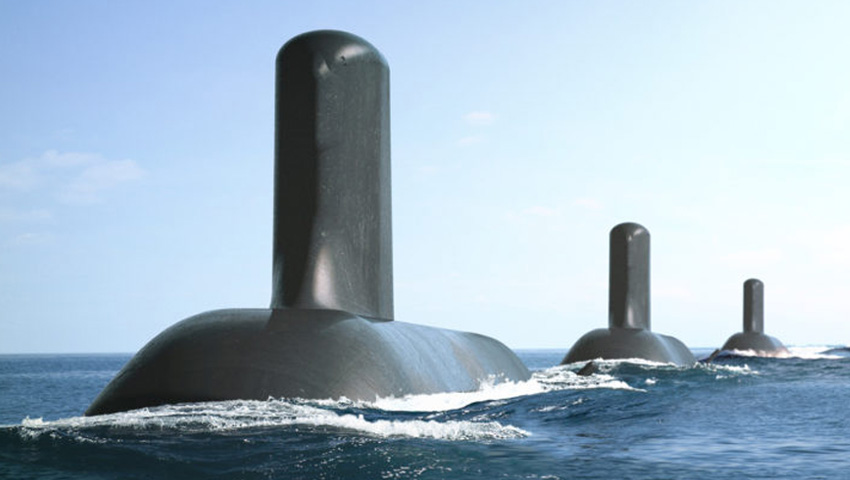Defence and Naval Group have responded to mounting public concern in regard to the amount of Australian industry content in the multibillion-dollar SEA 1000 Attack Class submarine program.
To continue reading the rest of this article, please log in.
Create free account to get unlimited news articles and more!
Following explosive claims made by Naval Group Australia CEO John Davis in an interview with Ben Packham of The Australian, the Department of Defence and Naval Group have issued a strong rebuke and sought to clear the record.
The joint media release from the Department of Defence and Naval Group begins by stressing the importance of 'sovereign control' over the Attack Class submarine fleet and the supporting industry that will develop in order to support the design, build and operational phases of the fleet.
"Sovereign control over the Attack Class submarine fleet and maximising Australian industry involvement throughout all phases of the Attack Class Submarine Program are contracted objectives in the strategic partnering agreement between Defence and Naval Group," the joint media release stated.
"Defence remains focused on these objectives and Naval Group is committed to their achievement."
Expanding on this, the joint release sought to allay any fears following comments made by Davis, who raised poignant questions about the amount of Australian industry content in the program and Naval Group's commitment to supporting the development of Australian industry as mandated.
"At this stage of the program, the preliminary design phase of the Attack Class progressing through the activities with Naval Group’s design team in France and Adelaide and Lockheed Martin Australia’s design team in Adelaide. Over 137 Australian companies and organisations have subcontracts at this point. A listing of many of these is attached and will grow."
Amid growing concerns about delays to the complex design phase as a result of the conversion of the submarines from nuclear propulsion to a conventional, diesel-electric system, both Defence and Naval Group responded, stating:
"Design of the Attack Class will continue into the 2020s, transitioning to Australia during the detailed design phase. The build of a hull qualification section in Adelaide is projected to commence in 2023 to certify the Australian workers and construction yard equipment ahead of the construction of the first Attack Class submarine.
A key focus of this was the mutual focus on the role Australian industry will play as the program continues to evolve over time from the detailed design phase through to the cutting of first steel, which is planned for 2022.
"As these activities progress, we will also be systematically approaching Australian industry to identify suitable suppliers of the vast array of equipment to be fitted to the submarine, ranging from hydraulic systems to galley equipment," the joint release stated.
"Providing Australian industry with opportunities to become involved in the program during design of the submarine offers us the best opportunity to develop capability and build the enduring industrial base we will need for the sovereign sustainment of the Attack Class fleet."
Finally, Defence and Naval Group moved to allay fears, reinforcing their commitment to supporting the development of a sustainable, competitive Australian defence industry, stating: "As all of these activities progress, the level of Australian industry participation and the development of Australian industry capability will continue to grow, meeting our goal of maximising industry’s involvement in the Attack Class Submarine Program and sustaining the sovereign control our nation requires over this strategic Defence capability."
The Attack Class submarines will be delivered as part of the $50 billion SEA 1000 Future Submarine program. Naval Group will build 12 regionally-superior submarines for the Royal Australian Navy.
Naval Group's successful Shortfin Barracuda design, which serves as the basis for the new Attack Class, is a conventionally-powered variant of the nuclear-powered Barracuda fast attack submarine currently under construction for the French Navy.
Lockheed Martin will provide the AN/BYG-1 combat control system, which provides an open-architecture submarine combat control system for analysing and tracking submarine and surface-ship contacts, providing situational awareness as well as the capability to target and employ torpedoes and missiles.
The 12 vessels will be built by Naval Group at a specialist submarine shipyard at Osborne, South Australia. The Commonwealth government’s Australian Naval Infrastructure (ANI) program will support the development of the future submarine shipyards.
The Commonwealth government formally signed the strategic partnering agreement with Naval Group in February 2019 ahead of confirming the final design specifications and requirements for the Attack Class submarines.
The Attack Class will enter service with the Royal Australian Navy at a time when 50 per cent of the world’s submarines will be operating in the Indo-Pacific region.
Stephen Kuper
Steve has an extensive career across government, defence industry and advocacy, having previously worked for cabinet ministers at both Federal and State levels.

 Login
Login








